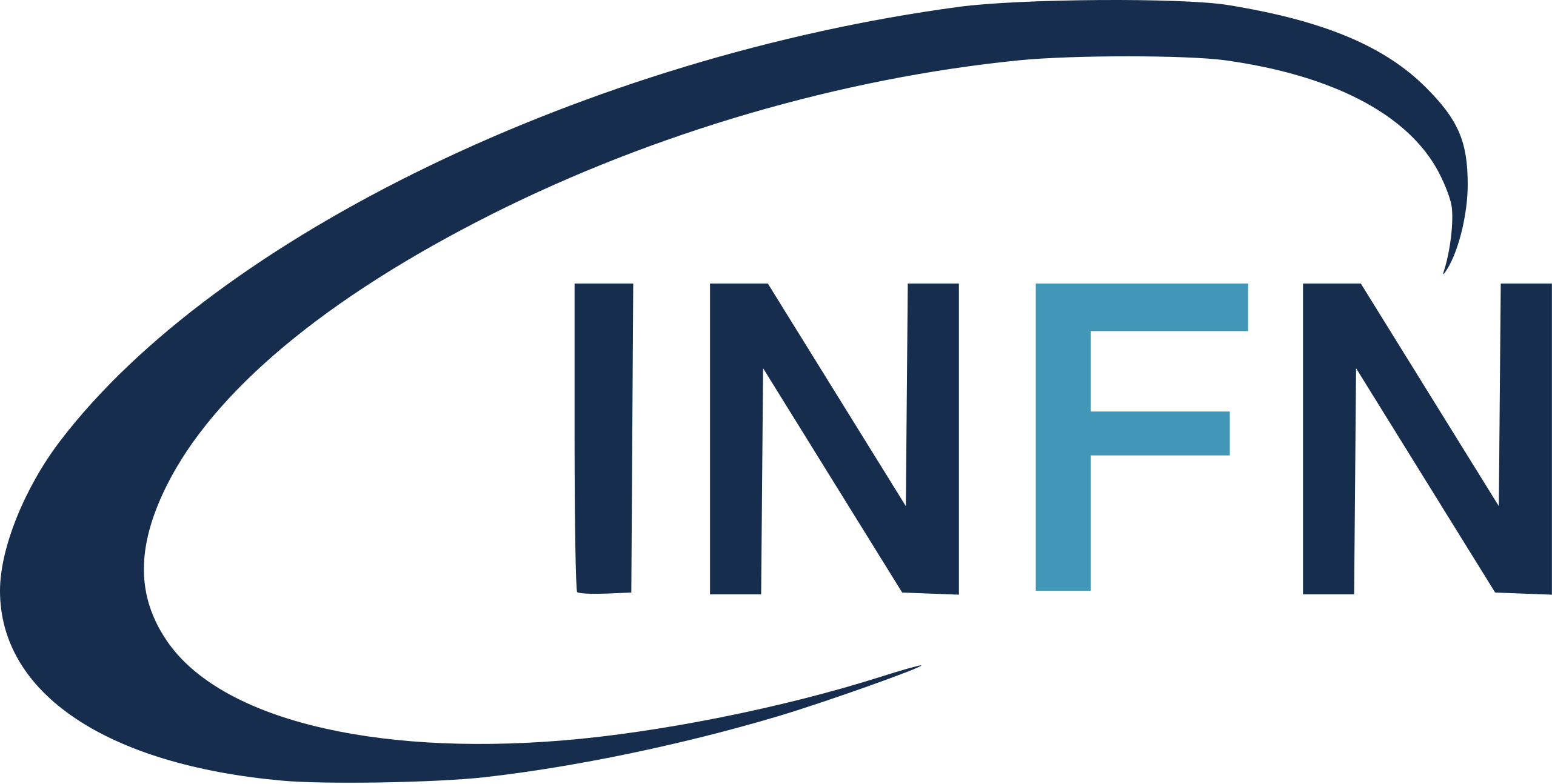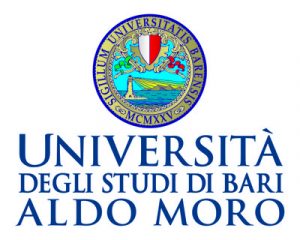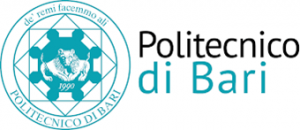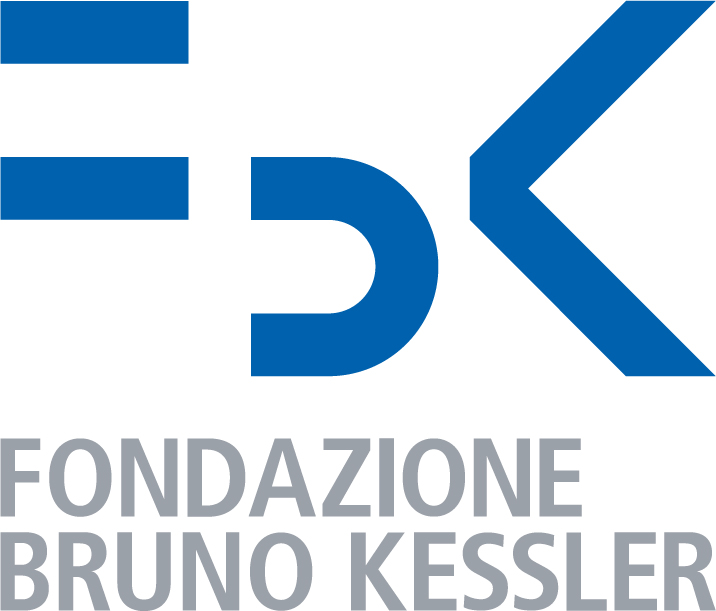IFD2022 - INFN Workshop on Future Detectors
Bari, Villa Romanazzi Carducci
“Dopo la roadmap dell’ECFA un momento di riflessione all’interno della nostra comunità guardando al futuro”
This is the third venue of this workshop on Future Detectors, called to mark another important step in the field by getting the INFN community together and debate the future developments. The variety and complexity of the INFN knowledge in experimental design, and its capability of proposing and proving new detector technologies, has always been key in outstanding discoveries in our investigation of Nature. This workshop aims at offering a framework for discussion on how to strengthen the competences on different aspects at a crucial time.
Following the recommendations of the European Strategy for Particle Physics Update (ESPPU), ECFA lead the effort to prepare and implement a Detector Research and Development Roadmap developed by the community, taking into account the progress on emerging technologies in all fields of research of great interest for INFN. At the same time the U.S. strategy process is completing its review, preparing a plan for the next decades.
The workshop will review different aspects of the detector development field for future experiments, with plenary presentations offering a comprehensive review of the status of the art of different technologies, to prepare for an in-depth discussion allowing both the experts and the younger generation to discuss and plan for the future.
Grazie a tutti per la partecipazione!






-
-
Registrazione e brunch di benvenuto
-
Future sfide: acceleratori, spazio, undegroundConveners: Aldo Ianni (Istituto Nazionale di Fisica Nucleare), Matteo Duranti (Istituto Nazionale di Fisica Nucleare), Nicolo' Cartiglia (Istituto Nazionale di Fisica Nucleare)
-
Session 1: Discussione
-
Quantum primerConveners: Caterina Braggio (Istituto Nazionale di Fisica Nucleare), Mirko Lobino (UniTn)
-
3
Quantum primerSpeakers: Caterina Braggio (Istituto Nazionale di Fisica Nucleare), Mirko Lobino (UniTn)
-
4
Rapidfire talks
-
a) Studio e caratterizzazione di nuovi dispositivi per la rivelazione di particelle basati sull’uso di magneti a singola molecola nell’esperimento NAMASSTESpeaker: Alberto Cini (Istituto Nazionale di Fisica Nucleare)
-
b) Toward single-photon detector based on Josephson effect for dark matter searchSpeaker: Alessandro D'Elia (Istituto Nazionale di Fisica Nucleare)
-
-
5
Discussione
-
3
-
Pausa caffè
-
Solid State DetectorsConveners: Adriano Lai (Istituto Nazionale di Fisica Nucleare), Claudia Gemme (Istituto Nazionale di Fisica Nucleare), Giovanni Ambrosi (Istituto Nazionale di Fisica Nucleare), Nicolo' Cartiglia (Istituto Nazionale di Fisica Nucleare)
-
6
Introduzione, Technologies for solid-state trackers
-
7
Rapidfire talks
-
a) Innovations in the design of thin silicon sensors for extreme fluencesSpeaker: Arianna Morozzi (Istituto Nazionale di Fisica Nucleare)
-
b) ARCADIA - piattaforma INFN per FD-MAPS in tecnologia CMOSSpeaker: Manuel Dionisio Da Rocha Rolo (Istituto Nazionale di Fisica Nucleare)
-
c) Novel ionizing radiation detectors based on perovskite filmsSpeaker: Andrea Ciavatti (Istituto Nazionale di Fisica Nucleare)
-
d) Thin monolithic pixel sensors with fast operational amplifier output in a 65 nm imaging technologySpeaker: Umberto Savino (Istituto Nazionale di Fisica Nucleare)
-
e) ALICE ITS3: the first truly cylindrical inner trackerSpeaker: Domenico Colella (Istituto Nazionale di Fisica Nucleare)
-
f) Timespot timing performance from 3D trenches sensorsSpeaker: Angelo Loi (Istituto Nazionale di Fisica Nucleare)
-
g) Timespot results on CMOS 28nm electronicsSpeaker: Lorenzo Piccolo (Istituto Nazionale di Fisica Nucleare)
-
h) Requirements for Si-microstrip (LGAD) for next generation space detectorsSpeaker: Matteo Duranti (Istituto Nazionale di Fisica Nucleare)
-
i) Silicon Photonics high speed links for HEP and spaceSpeaker: Fabrizio Palla (Istituto Nazionale di Fisica Nucleare)
-
j) Organic thin films as flexible, large area X-ray and proton detectorsSpeaker: Beatrice Fraboni (Istituto Nazionale di Fisica Nucleare)
-
-
8
Discussione
-
6
-
-
-
Liquid DetectorsConveners: Francesco Terranova (Istituto Nazionale di Fisica Nucleare), Gioacchino Ranucci (Istituto Nazionale di Fisica Nucleare), Marco Selvi (Istituto Nazionale di Fisica Nucleare)
-
9
Introduzione Liquid Detectors
Introduzione Liquid Detectors
-
10
Rapidfire Talks
-
11
Discussione
-
9
-
Pausa caffè
-
Training & TTConvener: Mariangela Cestelli Guidi (Istituto Nazionale di Fisica Nucleare)
-
12
Status and perspectivesSpeakers: Mariangela Cestelli Guidi (Istituto Nazionale di Fisica Nucleare), Alessandro Iovene (CAEN)
-
13
Discussione
-
12
-
Pranzo
-
Photon Detectors: Photodetectors & PIdConveners: Fabio Gargano (INFN-Bari), Fulvio Tessarotto (Istituto Nazionale di Fisica Nucleare)
-
14
Introduzione Photodetectors / PID
-
15
The cluster counting/timing techniques in drift chambers
The cluster counting technique represents a very promising alternative to the traditional ways of integrating the ionization charge for particle identification in drift chambers. It takes advantage of the Poisson nature of the primary ionization process and offers a more statistically robust method to infer mass information. Simulation studies prove that cluster counting allows reaching a resolution two times better than the traditional energy loss-based method over a wide momentum range in the use case of a helium-based drift chamber. It consists in singling out, in every recorded detector signal, the electron peak structures related to the arrival time of the electrons belonging to a single primary ionization act (cluster) on the anode wire. However, the search for hundreds of electron peaks and cluster recognition in real data-driven waveform signals is extremely challenging because of their superimposition in the time scale. The state-of-the-art open-source algorithms fail to reach theoretical expectations even in low-noise conditions. In this talk, we present cutting-edge methods to search for electron peaks in actual waveform time spectra and identify ionization clusters showing their application to beam test datasets collected at CERN facilities using helium-based drift tubes.
Speaker: Federica Cuna (Istituto Nazionale di Fisica Nucleare) -
16
Single photon detection with MPGDs
After the realization of the MWPCs with CsI PC for the RICH detector of the COMPASS experiment at CERN SPS, the COMPASS RICH was upgraded with four novel gaseous Photon Detectors (PD) based on MPGD technology, never used before in RIChes, for a total active area of 1.5 m2. The new PDs consist of two layers of THGEMs, the first also acting as a reflective PC thanks to CsI coating, and a bulk Micromegas on a pad-segmented anode; the signals are read-out by analog APV-25-based F-E. The status of the technology is summarized, the possible developments and improvements are described.
Speaker: Daniele D'Ago (Istituto Nazionale di Fisica Nucleare) -
17
Latest results on a new correlator for neutrons and charged particles with high angular and energy resolution
With the advent of new facilities for radioactive ion beams mainly rich in neutrons, SPES @ LNL, FRAISE @ LNS and FAIR @ GSI only to give some examples, the detection of neutrons among charged particles in Heavy radioactive Ion collisions became mandatory, with high angular and energy resolutions, and the construction of new detection systems suitable for this experimental purpose becomes both a scientific and a technological challenge.
The contribution will illustrate the results of recent tests performed on new plastic scintillator material, the EJ276, both in the "green-shifted" and in the ordinary version, coupled with PMT and SiPM. These experimental work is aimed at the construction of a prototype of a detector for neutrons and charged particles, based on a 3D cluster of scintillation units, with the technical goal of high energy and angular resolution. Recently the project has received new lymph and strength thanks to the funding of the recent PRIN project, ANCHISE which is focused precisely on the development of a first detection prototype.Speaker: Emanuele Vincenzo Pagano (Istituto Nazionale di Fisica Nucleare) -
18
LHCb RICH Upgrade
Hadron particle identification (PID) in LHCb is performed by two Ring Imaging Cherenkov (RICH) detectors. The system consists of an upstream detector, the RICH1, and a downstream detector, the RICH2, which use different radiators to provide PID to particles with momentum in the range 2-100GeV. In Run3 the photon detectors are composed by Multi-Anode Photo-Multipliers planes, which have good single photon response and very high active area. For Long Shutdown 3 an upgrade of the current electronics is planned in order to achieve a time resolution of approximately 200 ps to better reject the background. For High Luminosity LHC the RICH detectors will have a very high occupancy and improvements will be needed for the Cherenkov resolution (chromatic dispersion, optical aberrations, pixel size). Having a time-resolute RICH will play a fundamental role and studies are ongoing to improve all these aspects. A good option to replace the MaPMTs are the Silicon Photo-Multipliers: an R&D program is in progress to improve their intrinsic radiation hardness, operating them at a temperature less than -50°C. Another possibility is to develop an hybrid MCP, which would allow a really high time resolution.
Speaker: Federica Borgato (Istituto Nazionale di Fisica Nucleare) -
19
SiPM studies for the ALICE 3 RICH detector
The ALICE collaboration is proposing a new apparatus, ALICE 3, to investigate the Quark Gluon Plasma
(QGP) properties, exploiting precise measurements of heavy-flavour probes as well as electromagnet-
ic radiation. In this context, conceptual studies for the development of a RICH detector for ALICE 3 are ongoing. The proposed baseline layout is a proximity-focusing RICH, using aerogel (n = 1.03 at lph = 400 nm) as Cherenkov radiator and a layer of Silicon Photomultipliers (SiPM) for the photon detection, with an area of about 40 m^2. The proposed detector represents the largest one using this technology. If sufficient time resolution can be achieved in the SiPM photons detectors, they can be able to identify charged hadrons via TOF measurements. The ongoing R&D studies on the SiPM sensors will be presented.Speaker: Giacomo Volpe (Istituto Nazionale di Fisica Nucleare) -
20
A SiPM-based optical readout system for the EIC dual-radiator RICH
Silicon photomultipliers (SiPM) are candidates selected as the potential photodetector technology for the dual-radiator Ring-Imaging Cherenkov (dRICH) detector at the future Electron-Ion Collider (EIC). SiPM optical readout offers several advantages being cheap, highly efficient and insensitive to the high magnetic field (~ 1.5 T) expected at the sensor plane in the experiment. On the other hand, SiPM are not radiation tolerant and despite the moderate integrated radiation level (< 10¹¹ 1-MeV neq/cm2), single photon-counting capabilities and the Dark Count Rate (DCR) must be kept under control to maintain the optimal dRICH detector performance across the years. Several options are available to maintain the DCR to an acceptable rate (below ~100 kHz/mm2), namely by reducing the SiPM operating temperature and by recovering the radiation damage with high-temperature annealing cycles.
Speaker: Luigi Pio Rignanese (Istituto Nazionale di Fisica Nucleare) -
21
SiPM development for the TOP detector upgrade of the Belle II experiment
The Time-Of-Propagation (TOP) is the particle identification detector in the barrel region of the Belle II experiment. The detector uses quartz bars acting as Cherenkov radiators and Micro-Channel-Plate PMTs as photodetectos. Three generations of MCP-PMT are currently installed in the TOP detector. The SuperKEKB accelerator shutdowns of 2023 and 2027 will be used to upgrade the detector with the last generation of MCP-PMT. Many improvements in SiPM production technology have been achieved in the last years. Using SiPM as a photodetector is the backup plan for the 2027 upgrade and the primary option for following upgrades with higher luminosity and higher background. The characterization of SiPMs from several producers is ongoing at the INFN/Univ. Padova laboratory at different temperatures down to -50 degrees. The selected SiPMs are the last available generation with 1x1 mm2 and 3x3 mm2 dimensions and different cell sizes. Characterized SiPMs will be irradiated in 2022 and in 2023 at INFN-LNL and tested again to measure the degradation of their characteristics. Plans of SiPM development in collaboration with FBK have been included in the AIDAinnova project, task 8.4.1 and inside a PRIN 2022 proposal recently submitted by Univ. of Ferrara, Univ. of Padova and INFN.
Speaker: Ezio Torassa (Istituto Nazionale di Fisica Nucleare) -
22
NOA: a new reality for novel SiPM-based detector production
Silicon Photo Multipliers aim to be a promising technology in the next generation experiments, based on ultra-low background large volume detectors searching for rare events. Novel photosensors with high performance at cryogenic temperature have been developed by Fondazione Bruno Kessler and integrated by Laboratori Nazionali del Gran Sasso in large area photodetectors, thus opening the frontiers toward the realization of scalable liquid Argon experiments probing dark matter. A large-scale production of SiPM-based detectors can be achieved in the Nuova Officina Assergi infrastructure, a clean room of 420 m2 soon operative at Laboratori Nazionali del Gran Sasso, hosting the most advanced packaging and electronic test facilities for the integration of large arrays of radiopure SiPM photodetectors.
Speaker: Lucia Consiglio (Istituto Nazionale di Fisica Nucleare) -
23
PARTICLE IDENTIFICATION IN SPACE EXPERIMENTS WITH SCINTILLATORS DETECTORS
Particle identification is a crucial aspect of most particle physics experiments.
In particular for space experiments, due to the limited downlink bandwidth and to the necessity to stimulate multimessenger observations, it is of paramount importance to design an experiment which is able to apply online triggers to identify the impinging particles.
Currently, we are living in extraordinary times in space science with plenty of novel and ambitious missions, anticipating a scientific knowledge revolution. Most of them exploit ambitious designs, which are possible thanks to the use of SiPMs as readout of organic and inorganic scintillators.
In this talk some basic strategies for particle identification in space experiments will be presented and the influence they have in the design of new space missions.Speaker: Felicia Barbato (Gran Sasso Science Institute) -
24
Gamma-ray identification with Imaging Atmospheric Cherenkov Telescopes
The Imaging Atmospheric Cherenkov Telescopes (IACTs) represent one of the most successful detection techniques to observe gamma rays of astrophysical origin with energy above few tens of GeV. This technique is based on the detection of Cherenkov light emitted in atmosphere by particle showers which allows the reconstruction of energy and direction of the incoming particles. Fast and high resolution cameras consisting of arrays of thousands of photosensors, are ideal to capture particle shower images. Silicon Photomultipliers (SiPMs) are at the core of novel designs, especially for future IACT experiments, such as the Cherenkov Telescope Array (CTA), allowing improved performance with respect to standard Photomultiplier Tubes (PMTs). An overview of the photon detection technologies implemented in current and future experiments will be presented.
Speaker: Leonardo Di Venere (INFN Bari) -
25
Discussione
-
14
-
Pausa caffè
-
Gas DetectorsConveners: Davide Boscherini (Istituto Nazionale di Fisica Nucleare), Davide Pinci (Istituto Nazionale di Fisica Nucleare), Paolo Iengo (CERN)
-
26
Introduzione Gas DetectorsSpeakers: Davide Boscherini (Istituto Nazionale di Fisica Nucleare), Davide Pinci (Istituto Nazionale di Fisica Nucleare), Paolo Iengo (Istituto Nazionale di Fisica Nucleare)
-
27
The IDEA drift chamber at FCC-ee and CEPC and related elxSpeaker: Brunella D'Anzi (INFN - Bari)
-
28
RPC with Gallium Arsenide electrodes, a solution for medium sized high-rate detectorsSpeaker: Alessandro Rocchi (Istituto Nazionale di Fisica Nucleare)
-
29
The Resistive Cylindrical Chamber, a new detector based on the generalization of the RPC detectors to the quasi-planar fieldSpeaker: Alessandro Rocchi (Istituto Nazionale di Fisica Nucleare)
-
30
Greening Resistive Plate Chamber detectors for HEP applications.Speaker: Alessandra Pastore (Istituto Nazionale di Fisica Nucleare)
-
31
Fast Timing MPGDSpeaker: Piet Omer J Verwilligen (Istituto Nazionale di Fisica Nucleare)
-
32
Picosec Micromegas: a fast-timing gaseous detector for MIPsSpeakers: Davide Fiorina (Università & INFN Pavia), Davide Fiorina (INFN & UNiversità Pavia), Davide Fiorina (Istituto Nazionale di Fisica Nucleare)
-
33
The micro-RWELL: from the R&D to the technology transfer towards IndustrySpeaker: Giovanni Bencivenni (LNF)
-
34
New Resistive Micromegas structures for future detectorsSpeakers: M Teresa Camerlingo, Maria Teresa Camerlingo (Istituto Nazionale di Fisica Nucleare)
-
35
TPC gassose a lettura ottica per eventi di bassa energiaSpeaker: Flaminia Di Giambattista (Istituto Nazionale di Fisica Nucleare)
-
36
Discussione
-
26
-
-
-
CalorimetriConveners: Francesca Cavallari (Istituto Nazionale di Fisica Nucleare), Ivano Sarra (Istituto Nazionale di Fisica Nucleare), Massimo Casarsa (Istituto Nazionale di Fisica Nucleare), Monica Sisti (Istituto Nazionale di Fisica Nucleare)
-
37
Trends and future applications in calorimetrySpeakers: Francesca Cavallari (Istituto Nazionale di Fisica Nucleare), Ivano Sarra (Istituto Nazionale di Fisica Nucleare), Monica Sisti (Istituto Nazionale di Fisica Nucleare)
-
38
Rapidfire talks
-
c) Crystals for calorimetric applicationsSpeaker: Ioan Dafinei (Istituto Nazionale di Fisica Nucleare)
-
d) The Mu2e and MEG e.m. calorimetersSpeaker: Ruben Gargiulo (Istituto Nazionale di Fisica Nucleare)
-
e) R&D for innovative calorimeters with optical readoutSpeaker: Ivano Sarra (Istituto Nazionale di Fisica Nucleare)
-
f) The calorimeter for the IDEA experimentSpeaker: Marco Toliman Lucchini (INFN & University of Milano-Bicocca)
-
g) Design and optimization of a MPDG-based hadronic calorimeter for future collidersSpeaker: Anna Stamerra (Istituto Nazionale di Fisica Nucleare)
-
h) Quantum-dot light emitters for chromatic calorimetrySpeaker: Federica Maria Simone (Istituto Nazionale di Fisica Nucleare)
-
i) Compact calorimeter based on oriented crystalsSpeaker: Alessia Selmi (Università degli Studi dell'Insubria)
-
j) The Demonstrator of the instrumented decay tunnel for the ENUBET monitored neutrino beamSpeakers: Fabio Iacob (Istituto Nazionale di Fisica Nucleare), Fabio Pupilli (Istituto Nazionale di Fisica Nucleare)
-
k) Discussione sui calorimetri
-
37
-
Pausa caffè
-
Highlights e discussione finale
-
39
Highlights & Discussione
-
40
Chiusura e saluti
-
39
-
Pranzo
-
AIDAinnova
AIDA Innova general meeting
-
Preparazione del documento finale
-
